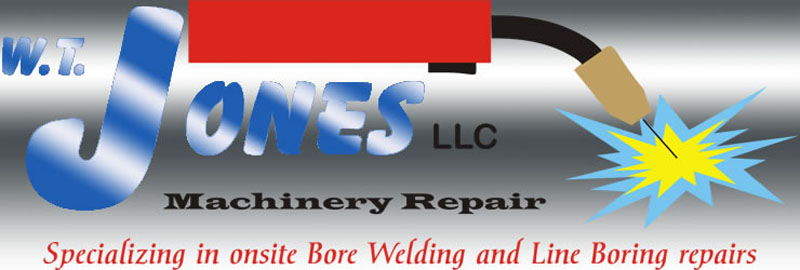
Grapple Repair
Lets have an in depth look at an actual repair job I did
Caterpillar 320 Grapple

One of my recycling customers has many excavators of various sizes with Contractor Grapples. They get modified as they wear out to make them tougher & last longer. Often a grapple can go for two machines with a few rebuilds along the way.
We have rebuilt all of their grapples at least once except this one. This unit was built by a now defunct company called Iron Works. They had a odd pin retention system that did not work out well at all. As a result over the years we made our own custom built pins with improved retention and use standard Caterpillar (Cat) hardened bearing sleeves in place of the supplied bronze bearings that the factory used. The use of Cat bearings simplifies parts supply. The pins are made from tool steel at a local hydraulic shop. This combination works out well and lasts as long as anything else.


As you can see in this photo of the stationary half of the grapple, the pin bore is worn out egged shaped and the outside is scored form a makeshift pin retainer bolt that was installed to keep going until a shut down could be arranged.
Bore welding
How do we repair the worn out hole you ask? There are a few options, but the best by far is to weld the bore and resize as required. First we clean and assess the damage. Then attach and align the portable boring bar components. I then set up the bore welder using the bar center as a reference. Below is the Bortech 306-P bore welding machine and a close up of the weld head. One simply adds as much weld as we need to make the bore small enough to machine to correct diameter.



This is what the bores look like with the bores welded and the faces built up to be machined
Machining
The welded bores are machined to either accept a press fit bearing, slip fit of the pin, or an engineering specified tolerance. For this I use a Climax Portable Machine tools Inc. BB-1149 (now known as a BB5000) boring bar. There are many manufactures of such tools, but I find this rig simply to be the best for my applications, hands down.
Bore Machining

The boring bar is placed back in the bearing mounts and the Drive and Feed units attached. The tool bit is set and boring begins. I typically bore the holes first & then face the bosses if required. On this piece I faced the inner bosses first for no particular reason.
Facing Operations
Lets now have a look at facing surfaces perpendicular to the bore. This is done to take up side to side wear that occurs in hinge areas or mounting surfaces. For this segment, we will use the moving or rotating side of the grapple.
 The rotating side will get modified to accept regular Caterpillar (Cat) bearing that you would normally find used in the machines stick nose or H-link to rotate the bucket. Simple, readily available & relatively inexpensive compared to custom options.
The rotating side will get modified to accept regular Caterpillar (Cat) bearing that you would normally find used in the machines stick nose or H-link to rotate the bucket. Simple, readily available & relatively inexpensive compared to custom options.
We will fill in those counterbores you see as the parts that used to go there are not available anymore and they were a pain to deal with when you had to disassemble the unit.
Face Welding Torch

The faces of the bosses are built up using a face welding torch that is part of my Bortech kit. The face torch weld radially in towards the center building up the perpendicular surfaces. Pretty handy tool if you ask me.

The face torch in acton set up on the boring bar mounts
Below is the finished build up awaiting machining.

Face machining

After the required welding is complete in the bores and on the faces, the boring bar is set back in place & machining is begun. First I machine the bores
One of the cool things about Climax boring bars is they have a fairly well built and easy to use facing head attachment. It makes life pretty simple.

Here we see the facing head in action making the second cut. The build up & subsequent cuts are figured to provide just enough room to assemble the mating halves with out shims, if at all possible.

The bores and faces are complete and to size awaiting the press fit bearings and for me to clean up the edges some. You can see the sparks from the bore welder as I weld the H link pin bores.
Finishing up.
After the bearings are installed and all the other work that needs done is complete we assembled the unit.


Here you can see that the faces are machined square and that the fit is close. There is no side to side movement anymore. When we started there was nearly 1/2 inch. You can also note the retaining pin collar that was fabricated to hold pin in place and keep it from rotating.
The rest of the components were repaired, stiff arm, stiff arm mounts etc... The stick & linkage bearings were replaced along with the grease seals. The unit was reassembled and put back in service
Back to previous page
